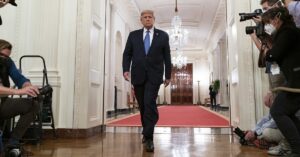Court reinstates fired officials in NLRB and MSPB decision
A landmark decision handed down on Monday by a federal appeals court has temporarily blocked the Trump administration from dismissing two key members of federal boards, allowing them to return to their roles and potentially setting the stage for a Supreme Court showdown, Fox News reported.
The U.S. Court of Appeals for the District of Columbia Circuit, in a 7-4 decision, reinstated Gwynne Wilcox and Cathy Harris, citing precedent from previous Supreme Court rulings.
The decision came after President Donald Trump's administration attempted to remove the two Democratic appointees from their positions on the National Labor Relations Board (NLRB) and the Merit Systems Protection Board (MSPB). The court's ruling effectively reverses a previous decision made just 10 days earlier by a three-judge panel.
Legal Arguments Rooted In Precedent
Wilcox and Harris had been ousted by the administration earlier this year in what has been described as part of a larger effort to realign federal board compositions. Both individuals faced termination orders citing a need for administrative change.
In making its ruling, the appeals court leaned heavily on Supreme Court precedents, specifically referencing Humphrey’s Executor and Wiener v. United States. These cases address the limitations on the removal of officials from "multimember adjudicatory boards" that play critical roles in federal governance.
The judges emphasized the importance of adhering to existing Supreme Court guidelines. They cautioned against diverging from established legal standards unless directed by the Supreme Court itself. "The Supreme Court has repeatedly told the courts of appeals to follow extant Supreme Court precedent unless and until that Court itself changes it or overturns it," the judges stated in their opinion.
Impact On Trump's Executive Orders
This en banc decision underscores the complexities involving the execution and interpretation of executive power, particularly in light of evolving administrative priorities.
The appeals court's decision also signals potential limits on early executive orders issued by President Trump, which have been met with criticism and calls for scrutiny. Legal experts suggest that these executive actions need to withstand rigorous examination against historical legal frameworks.
The Trump administration, which had sought an administrative stay, may now consider escalating the issue to the Supreme Court. This could result in a broader examination of the powers vested in the executive branch and its interaction with federal boards.
Scrutiny Of The Appeals Court Decision
The reinstatement of Wilcox and Harris temporarily restores the balance of appointees on both the NLRB and MSPB, but the future security of their positions remains uncertain pending further legal battles.
Observers note that this development adds to the growing list of legal challenges that the Trump administration has encountered in its formative months. Critics argue that the administration's agenda could benefit from a more cautious approach when dealing with statutory and constitutional boundaries.
While the reinstatement of Wilcox and Harris brings immediate relief to the appointees, it also ushers in questions about the long-term implications of the appeals court's decision. As the administration potentially prepares for a Supreme Court battle, legal analysts will be watching closely to see how the judiciary interprets the extent of executive authority.
The case now becomes a focal point for examining how far-reaching executive actions can be, and whether or not precedents need to be reevaluated in light of contemporary governance challenges.
The implications of this decision may transcend beyond the current administration, setting a precedent for future interpretations of the powers afforded to the executive branch. As Wilcox and Harris resume their roles, the battle over their tenures is far from over, with the highest court in the land poised to play a crucial role in determining their fate.




